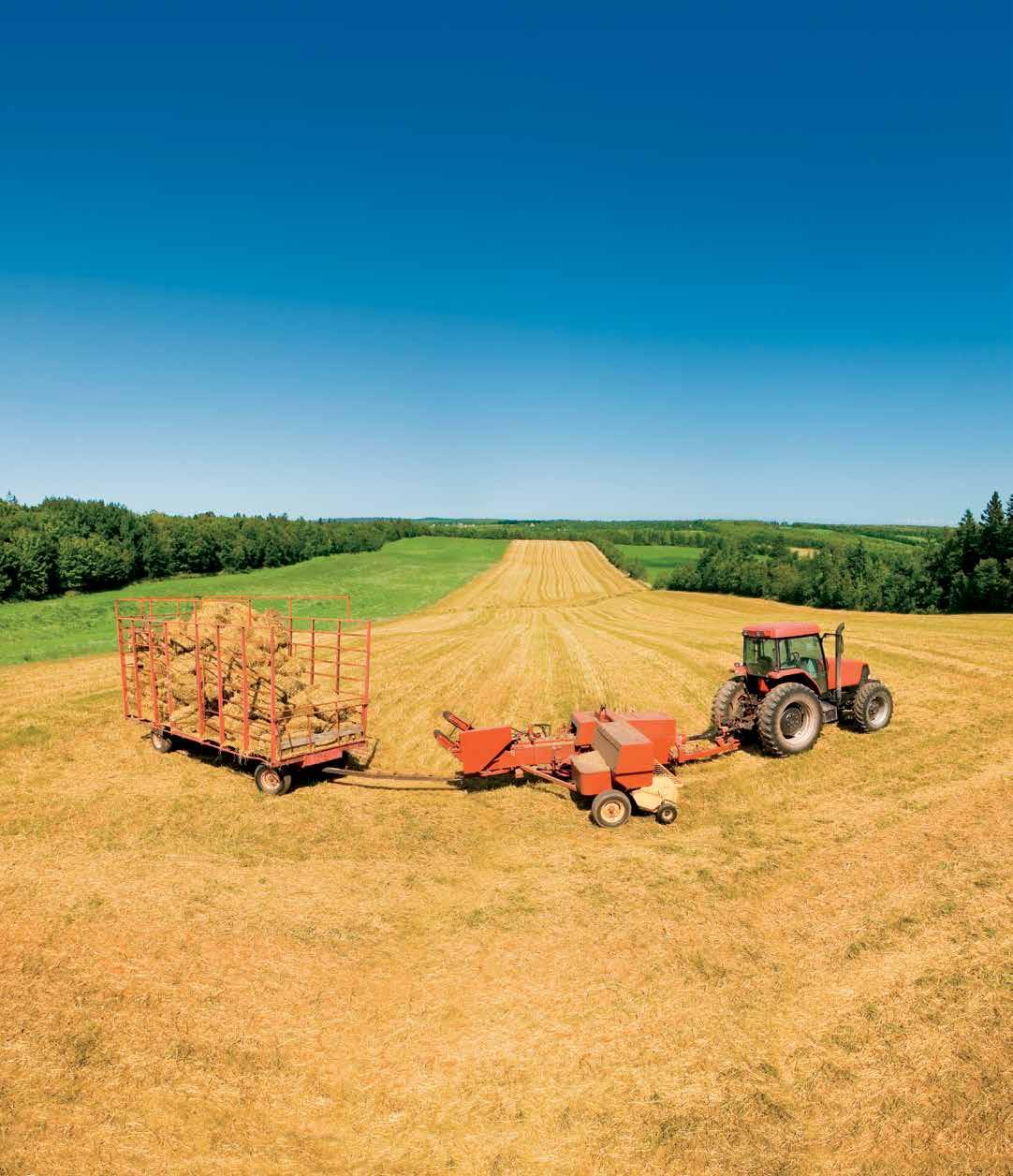GREENER PASTURES



4.99%*
For a limited time, come experience the emission-free performance and quiet power of the Solectrac e25 compact all-electric tractor. Blending clean energy with modern technology, the e25 provides maximum torque at zero RPMs—so you get all the power and performance you need, with a working runtime up to 6 hours. Enjoy lower overall costs than diesel—no expensive fuel to buy, less maintenance with one moving part in the motor, and no engine oils or DPF to replace. For full specs visit Solectrac.com

July 2023
Publisher & Owner
Office & Accounts Manager Andrea Winfrey andrea@mshorsereview.com

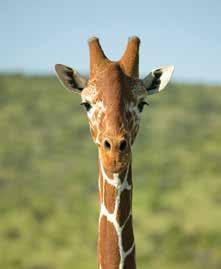
Editorial Coordinator & Writer: Alicia Johnson Alicia@mshorsereview.com
Advertising & Marketing
Kayla Benson info@mshorsereview.com Contributing

I feel as if I have had many comebacks. Comebacks in my career, comebacks in my health, comebacks in my riding. I think humans are made for comebacks. We learn, study, train, and test ourselves over and over throughout life. When we accomplish goals sometimes we relax and take time off. It is hard to be at the top all the time. Many superstar athletes experience burn out, time off, and retirement. They all have to commit to their comeback, whether it is coming out of a long time off, injury or illness, or coming out of retirement.
For me, I am at a stage of comeback with my riding. I have had horses my entire life, and I have been a horse owner for over 20 years. My senior horse has been with me for 17 years and counting, and I have added two more to the herd. Due to health restraints of my own, my horse, and family members I sat out from riding for at least 7 of the last twenty years. That’s almost half the time of my adult horse ownership journey.
Sure, I’d ride here and there, but never on a consistent schedule. When I had to retire my senior horse six years ago, my riding took a major hit. That was also the same year my mom had her stroke and my dad’s Alzheimers accelerated rapidly. Talk about a hard year! Riding was not on my brain; surviving was the only thing I could focus on at the time!
During 2020 and COVID I found myself seriously looking for my next riding horse. Many people asked me if it was better to “horse shop” until after Chad and I started a family. I knew if I put horse shopping on hold and started a family I would never get a new riding horse. I knew the only way I would hold myself accountable was if I had a horse staring me in the face and waiting for me to ride him.
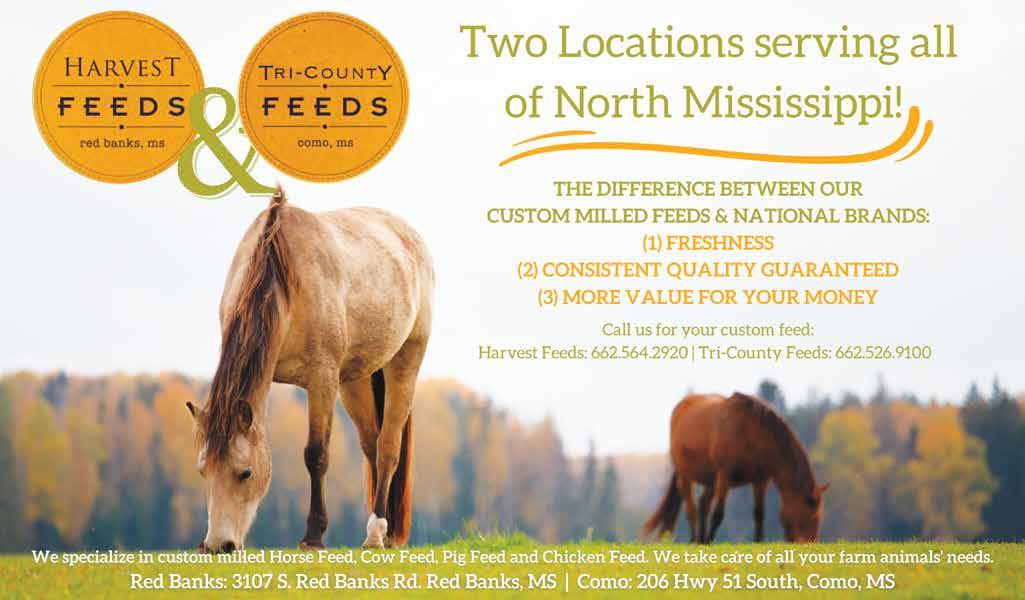
Fast forward today, I am looking at a pretty yellow and white horse show ribbon in my office. I found my new horse, Kev-
in, and purchased him in 2021. Yes, he sat quietly and patiently for me to no longer be pregnant, get through the newborn stage and get him into training. The weekend of June 22-24 he went to his very first horse show at the EXel Schooling Show in Germantown, Tenn. He came off the trailer showing everyone how tall he was, which is tall! He talked to every horse who called out to him, and screamed in my ear quite a lot. He thought a porta-potty was a dragon, but he quickly realized it was not going to eat him. And he went into his only class, Very Green Under Saddle, and then spooked at a baby and baby stroller. By the way, it was my baby and my stroller. But he came out with a third place out of ten, and I was beaming with pride.
Robyn Miller, my trainer, gladly rode him and acclimated him to his first horse show experience. I desperately wanted to be the one in the saddle, but for Kevin’s success I knew Robyn should lead him and reassure him in his new job and test.
As for me, I am working on my comeback: riding weekly, weight lifting, building my endurance through circuit training and cardio. It seems like I don’t excel at all when I think about the rider I was in my twenties. My body is different at 40 and after childbirth, but I don’t doubt how strong my body is or how strong it will become again. When
I think about the challenges that took me away from riding in the first place, and how I am now back in the saddle and reteaching myself what it is like to be physically and mentally dedicated to the equestrian sport, I find my comeback to be victorious despite the length of time it is taking me to get back to the level of riding I know I am capable of. Some comebacks are tales of triumph. Others are tales of transformation. Mine is a tale of resilience. I don’t think I will be the same rider I was prior to the last 7 years. I think I will be better. I think I will be more aware of what I ask of my horse and future horses. More importantly, I am more dedicated to the equestrian sport now, especially to show my daughter what it means to commit to a goal and to see it through no matter the time it takes you.
Comebacks aren’t just for the young souls either. I find the most celebrated comebacks are of those who showed signs of aging and defeat. Perhaps one thing I love most about riding horses is that you can do it at any age. And many times the “elderly” rider is the most successful because he/ she has used their years with horses as learning experiences to become better horsemen and women overall.
Lauren Pigford Abbott Publisher & Owner


Summer can bring on a whole new set of issues concerning horses’ hooves. Moist environments can predispose your them to numerous ailments and problems, including bruises. What can you do to help prevent bruises or pro-
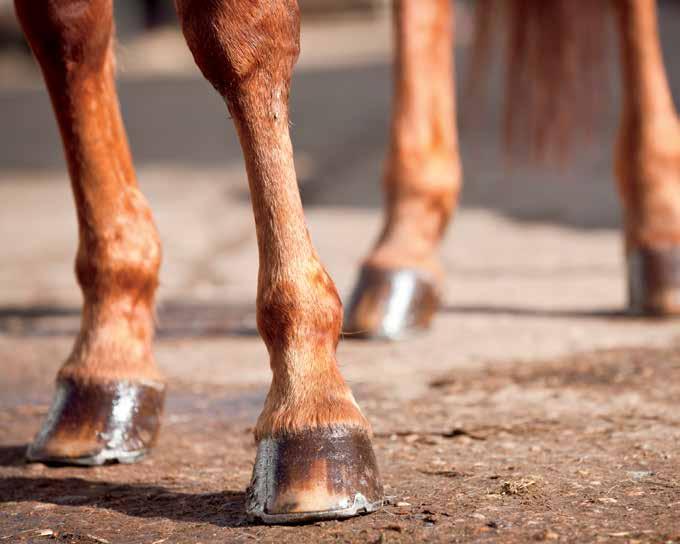

Hoof bruises can be the result of a number of things, including improperly fitting shoes, too short of a trim, rocks, hard landings, and even sudden changes in terrain. Moisture in the hoof makes it more susceptible to developing bruises under summer conditions. These hoof bruises can manifest in a variety of colors: red, purple, or even hot pink. They may be seen on the sole, hoof wall, or even along the
James Luttrell, veteran Mid-South farrier since the 1970’s, states bruises are more likely seen in the horn of the foot in horses with white feet and less so in those with dark feet. “Horses that are ridden a lot on hard surfaces” are at risk for bruising as well, Mr. Luttrell states. Shoeing horses who are prone to bruising may help keep them comfortable
A stone bruise may be visible on the sole, especially after your farrier removes the surface with his knife. Bruises that cause the pooling of blood at the site can create ideal conditions for microorganisms and bacteria to thrive, which can lead to a subsequent abscess. Therefore, it is necessary to provide your horse with proper hoof maintenance and care
Check with your veterinarian or farrier first, if warranted, but if you see your horse limping and suspect a bruise, pick up the hoof (only if you can safely do so) and apply careful pressure with your thumbs at certain points around the sole. If you are able to locate an area of interest by your horse’s reaction to the pressure, you have found the bruised area most likely.
Now that you’ve located the bruise, you can begin to treat it. Again, always check with your vet or farrier first, but there are home remedies you can try in an attempt to alleviate pain associated with bruised hooves and help prevent abscesses. A hoof poultice is a good place to start. Epsom salt is an economical, DIY option when it comes to treating your horse’s bruised hooves.
A quick internet search reveals several homemade Epsom salt poultice recipes using ingredients most horse owners and caregivers have on hand, such as sugar, iodine or betadine, and Apple Cider Vinegar. After applying liberally, a poultice should be covered with a wrap or dressing. You can also soak bruised hooves in a shallow, rubber bucket using Epsom salt. Commercial products are also available for dressing or soaking bruised hooves, should you choose not to make your own.
National Farrier’s Week is July 9-15 this year. This special week is set aside to acknowledge the contribution of farriers to the equine industry. Take time to tell your farrier how much you appreciate him or her and the importance they make in the lives of your equines. By going to AmericanFarriers.com, you can even nominate a farrier who has made an impact in your life- perhaps someone who passed on invaluable lessons or helped you get your bearings in the equine industry or even as a rider. As clients and equine business owners, let’s take time to celebrate our farriers this week.
Section Sponsored By:

The summer sun probably has equestrians reaching for the sunscreen as we head outdoors to ride and care for our horses. Those with fair skin especially realize the importance of applying that SPF. However, have you considered humans are not the only ones susceptible to sunburn this summer?
Although not the same conditions, sunburn and photosensitivity can be difficult to distinguish in your horse this summer. Photosensitization is more serious and occurs when your horse’s skin becomes overly sensitive to the ultraviolet light (UV) from the sun. The American Association of Equine Practitioners’ (AAEP) website states photosensitization “is different from sunburn in that it often affects both pigmented and nonpigmented areas of the body.” You may notice a horse suffering from photosensitization developing redness, hives, or even scaly skin lesions- even on a darker skinned equine. These photosensitive horses will then rub or scratch these exposed areas of skin, such as the muzzle, ears, and even eyelids in an attempt to satisfy the itch. If the integrity of the skin is compromised, your horse is now at risk for infection as the open skin entices flies to the site.
burned as it grazes this summer, treat it as you would yourself. The best way to avoid a sunburn is to avoid the sun itself. If possible, consider keeping your horse stalled during the day and turned out at night. If that’s not a feasible solution, you can at least try to avoid the part of the day when the sun’s UV light is most powerful, between 10 AM and 2 PM. Just like humans, once your horse has a sunburn it’s best to avoid more direct sun exposure until the sunburned area has had time to heal.
By Alicia Johnson alicia@mshorsereview.comSunburn is the same in horses as in humans and is characterized by redness and inflammation. Also like humans, sunburn can lead to peeling skin in equines and even blistering if severe. Pain is associated with equine sunburn as well. Equines, specifically those with light-colored coats, like Paints and Pintos, Appaloosas, or grays and cremellos, or even light skin, such as horses with bald faces or a white blaze are prone to sunburn.
If you are concerned about your horse becoming sun-
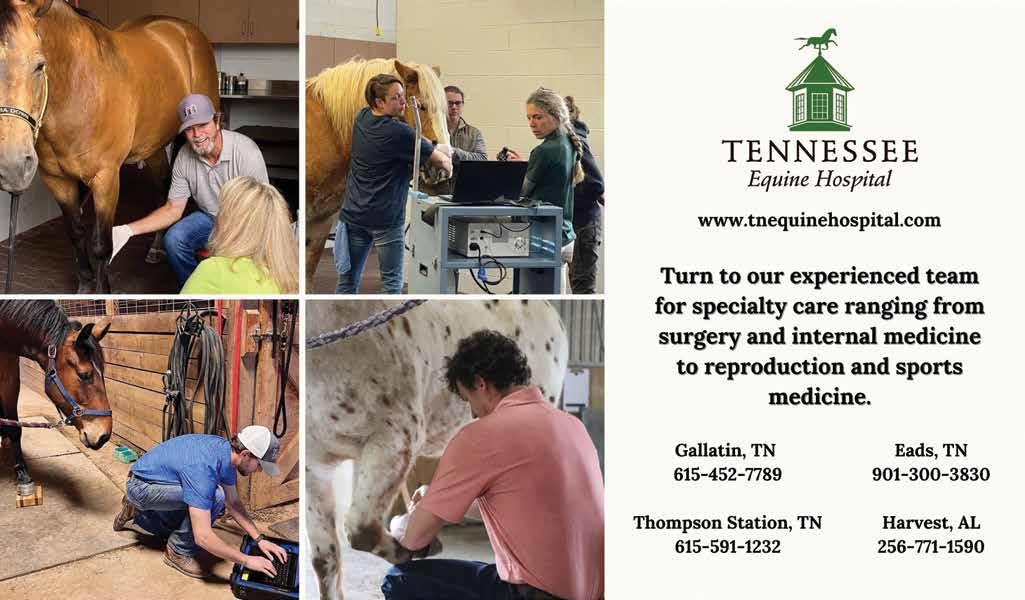
Going along with the strategy of prevention, sunscreen is another option if keeping your horse stalled is not. As always, consult with your veterinarian first, but applying a high-SPF sunscreen to the muzzle and any white markings on your horse will ensure decreased UV light exposure. Just like in humans, sunscreen will need to be reapplied to your horse frequently, as directed on the product. Mineral sunscreens containing zinc may be most effective in horses as they hold up well and can also help heal skin irritation. To protect delicate areas, such as around the eyes, consider a full-face fly mask; many of these now come with UV protection. Remember to remove fly masks daily and check for any areas of skin irritation or discomfort.
If photosensitization is diagnosed by your vet, stalling during the day becomes more of a requirement. Because this condition is more severe and can cause death of skin tissue, your vet may recommend corticosteroid injections along with other therapies to treat it.

Antioxidants protect cell membranes throughout the body and therefore support overall health. Specifically, antioxidants counter the effects of “reactive oxygen species,” also known as free radicals, which damage cell membranes. Free radicals increase due to environmental stressors, exercise, and inadequate antioxidant stores. As researchers continue to study antioxidants, they discover even more advantages of feeding antioxidants to horses.
One antioxidant in particular, coenzyme Q10, is an essential part of cellular bioenergetics, specifically in the production of adenosine triphosphate, a compound that provides energy to cells. In addition to its direct antioxidant and energetic properties, coenzyme Q10 is also capable of recycling and revitalizing other antioxidants, such as vitamins E and C. Other important functions of coenzyme Q10 have been recognized recently, including cell signaling and gene expression.
Coenzyme Q10 is instrumental in reducing oxidative stress, defined as an imbalance in the equilibrium of antioxidants and oxidants in favor of oxidants. Oxidative stress occurs in horses involved in many exercise scenarios—from those performing high-intensity exercise (e.g., endurance, show jumping, racing) to untrained horses unaccustomed to exercise.
A recent study completed by Kentucky Equine Research in collaboration with Stephanie Valberg, D.V.M., Ph.D., demonstrated that Kentucky Equine Research’s nanodispersed liquid coenzyme Q10 prod-


Sponsored Content by Kentucky Equine Research

supplements prevented lipid peroxidation in those horses who were not previously exposed to an exercise regimen.
Supplementation with coenzyme Q10 has also resulted in reproductive benefits. Most notably, coenzyme Q10 improves semen quality and motility in stallions. As explained by Catherine Whitehouse, M.S., a nutrition advisor for Kentucky Equine Research, “Dietary supplements such as the antioxidant coenzyme Q10 and long-chain omega-3 fatty acids (DHA and EPA) may improve sperm quality parameters in stallions with suboptimal fertility. Coenzyme Q10 plays a role in energy production of spermatozoa and, in part, motility. Positive improvements in motility have been observed within 2 to 4 weeks after beginning supplementation.”
To conclude, supplementation of coenzyme Q10, such as Nano-Q10, is beneficial for those horses that are exercised or used for breeding frequently. Due to the benefits of coenzyme Q10 and its effects on oxidative metabolism in skeletal muscle, Valberg, a leading authority on muscle problems in horses, recommends Nano-Q10 be fed with MFM Pellet™ to protect muscle cells from exercise-related oxidative damage.
uct, Nano-Q10™, promotes oxidative metabolism in skeletal muscle by increasing mitochondrial oxidative enzymes in conjunction with decreasing glycolytic enzymes.
In an effort to shed more light on the effects of vitamin E and coenzyme Q10 on exercise-induced oxidative stress in horses, European researchers designed a study using 40 healthy, untrained leisure horses.*
Vitamin E and coenzyme Q10 were offered twice daily for 14 days to all horses along with their regular diet of oats, hay, and water. These horses were divided into one of four treatment groups: unsupplemented control; vitamin E-only group, receiving natural vitamin E oil at a dose of 1.8 IU/ kg body weight/day; coenzyme Q10 group, receiving 800 mg/day; and a combination vitamin E and coenzyme Q10, receiving the same doses as the single supplement groups.
After the two-week supplementation period, all horses participated in moderate exercise. Blood samples were collected at four predetermined time points: (1) baseline prior to antioxidant supplementation, (2) 14 days after supplementation but before exercise, (3) at the end of the exercise program, and (4) 24 hours after exercise.
The blood samples were evaluated for various measures of oxidative stress. Vitamin E and coenzyme Q10 levels were also assessed. The study discovered supplementation of coenzyme Q10 and vitamin E together was more beneficial than when supplemented alone. The levels observed in this study indicated that this combination of
*Svete, A.N., T. Vovk, M.B. Topolovec, and P. Kruljc. 2021. Effects of vitamin E and coenzyme Q10 supplementation on oxidative stress parameters in untrained leisure horses subjected to acute moderate exercise. Antioxidants 10:908.
Kentucky Equine Research is an international equine nutrition, research, and consultation company serving horse owners and the feed industry. The company advances the industry’s knowledge of equine nutrition and exercise physiology, applies that knowledge to produce healthier, more athletic horses, and supports the nutritional care of all horses throughout their lives. Learn more at ker.com.
For Jonathan Fortenberry, Risk Manager and Independent Contractor with several insurance carriers (with American National being the main one), increasing yield has been a recurring theme throughout his life. Growing up on a rice and soybean farm in the Mississippi Delta, he first learned the trait of increasing yield from his grandfather, Rice Farmer of the Year a few times in the late 80’s and early 90’s, and also made the cover of Progressive Farmer. “He was noted for looking at planting in a new way to increase yield, and I think that’s where I get that trait from,” Jonathan states. He continues, “It taught me to look at a problem and maximize every part of the solution.”
A self-proclaimed “math nerd,” Jonathan’s first major career was with FedEx, ensuring planes were loaded in a balanced way that promoted safe flights. Continuing with the themes of balancing and increasing yield, he then got into banking. In 2014, while working at a local bank, he met the man who would become his mentor in the insurance industry. He had a longing to work in the investment world, but soon realized in addition to planning, he enjoyed being out on farms and at businesses much more. This led to a desire to participate in both sides and a natural progression into the insurance industry.
With a new college degree, a young marriage, and an infant son, Jonathan decided there was no better time to open his own business. Sadly, his father passed away only 5 months after this, and the funeral home informed his family his father’s life insurance had expired. “It was crushing to us. So I made it my mission to make sure other people don’t feel what we felt then,” Jonathan explains.
These experiences propelled Jonathan to find his niche in the insurance world. He pours his strengths of increasing yield and promoting balance into his work daily. “My career today is almost entirely managing relationships and answering tough questions. Most of us have invested our time, our money, our energy, and sometimes our blood in
our hobbies, our businesses, and our homes. It’s my job to make sure people are protected, they understand how they are protected, and they feel good about the solution,” Jonathan states.
His approach to the importance of having horses, horse

“ In the worst case scenario, we lose not only parts of our heart, but also our time and investment. Farm policies and horse insurance policies can help recoup some of that.”
farms, equine businesses, and equipment covered is a simple yet effective one: “Insure the things that matter.” Loss of a barn translates into a boarding operation or trainer being unable to run a business, which means a loss of income. Losing a truck or trailer means hitching rides to the shows. As we all know, horses are notorious for injuring themselves or coming down with some random ailment, some requiring emergency vet visits, and those bills add up quickly. Jonathan states, “ In the worst case scenario, we lose not only parts of our heart, but also our
time and investment.” He wants his clients and potential clients to know, “Farm policies and horse insurance policies can help recoup some of that.” Horses, barns and outbuildings, trucks and trailers, and even fencing can and should all be insured. Going beyond horses and the equine world, Jonathan reminds us: “And then there’s each other. Everyone, and I mean everyone, has someone that loves them, and most of us have people that depend on us. The value of life insurance when someone passes away can be an absolute godsend. Horse owners and folks in the horse business [world] should think through their belongings and tools and gauge how much it hurts to lose those items. If it would stop or slow business, it’s worth insuring.”
When asked about his future goals for his business, Jonathan hopes to continue to increase his yield. He would like to grow his business roughly 7-8 times what it is now. “That will give me the capacity to give others a start in this wonderful career, just like I was given the opportunity,” he explains. Jonathan understands that in order to meet his growth goal he will need to continue to meet new people and earn their trust. As far as adding clients goes, “It’s not just a game of numbers,” for him. “It’s helping people feel at peace just in case the worst day comes. It means the world to me when someone trusts me. I do not take it lightly. When they hurt, I hurt. When they win, I feel like I’m winning with them,” he states.
Jonathan encourages you to contact your agent and review your current policies to ensure your property, horses, equipment, and even the kind of riding activities you participate in are properly covered. If you have any questions at all, he gladly welcomes them- even if you choose not to do business with him. He can help cover your needs, whatever those may be. “If [you] want to know how to shop for insurance for your aging folks or your child that just turned 16, or if you want to open a new business, or if you want to save for a day when you won’t work as much, I want to be in the conversation with you,” Jonathan expresses.
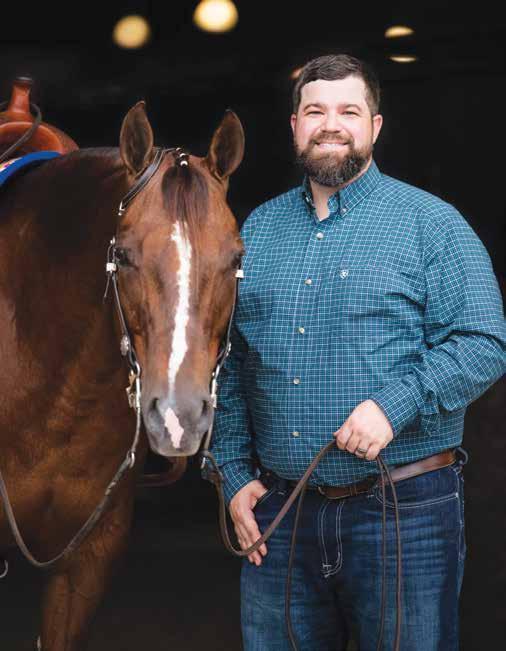

Eighteen-year-old Junior rider, Alexandra (Alex) Clark, has been riding for eleven years now. Her parents, Audrey and Eddie Clark, recall Alex expressing her desire to ride horses from early on. In fact, she began telling them she wanted to ride as soon as she could form sentences. Not immersed in the equine world, Audrey and Eddie were not completely sold on the idea of their young daughter becoming an equestrian at first. However, thanks to the Clark’s neighbors and good friends, the Mangum’s, Alex now had a route into her dream of riding. Being experienced equestrians themselves, the Mangum’s were willing to help her get started. Her riding career began with a summer camp and progressed into years of lessons and showing.
At nine years old, the Mangum’s introduced Alex to Joanna Wilburn, Ruth Wilburn, DVM, and Sally Ross Davis, owners of Rollingwoods Farm, a family-run Welsh Pony breeding, training, and sales operation in Ol-


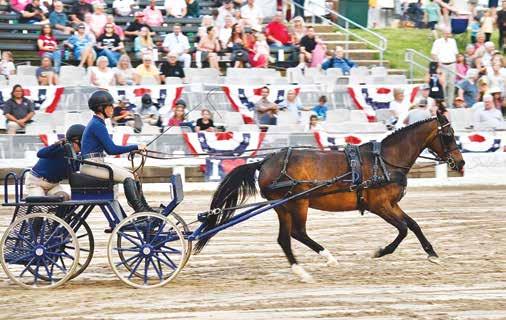


home while she continued to show other ponies. Hot Topic was put on the show string this year as a four year old. “I could not be more proud of the way she has handled her first year of showing. While this may seem minor as I have broken out and shown many young horses, I consider developing Hot Topic to be my biggest accomplishment because I was able to work with her from her yearling year until now. The pony she has become is not only a product of my work with her over the past 3 years, but it is also the culmination of the hard work I have put in and knowledge I have gained throughout the entirety of my riding career,” Alex explains.
without her influence. Joanna has invested innumerable hours into expanding my knowledge as an equestrian, while also teaching me valuable lessons that apply to circumstances much broader than what can be found in a riding arena. She is my unwavering support system both inside and outside of the ring, and without her I would not be able to take advantage of all the incredible opportunities that I am presented with. I firmly believe that every equestrian needs a Joanna figure in their life because I would certainly be lost without mine.”
ive Branch, Miss. Initially, Alex rode for the Wilburns on occasion; however, by the time she turned eleven, she was riding for Rollingwoods full-time. “As a child, the thing I wanted most was to ride all the time, and that was exactly what riding for the Wilburns allowed me to do,” Alex recalls.
Being a full-time pony rider at Rollingwoods for the last seven years consists of much more than just riding ponies. Alex’s responsibilities on the farm go far beyond that. She states, “While that is a big part of what I do, I also manage the Rollingwoods website and social media, register ponies, design and promote sales ads, and help Joanna with the day-today tasks around the farm. I generally ride and drive multiple ponies every day.”
Alex’s biggest accomplishment of her riding career so far has less to do with material awards and titles earned, and more value is given to the “less tangible accomplishments,” such as the development of Rollingwoods Hot Topic, a Section B Welsh Pony Mare. Alex began working with Hot Topic on the ground as a yearling and broke her in 2022 as a three year old. She put in a year of work with her at
As far as her biggest challenge, Alex says that would be confidence level issues. Like many competitive equestrians, “I have always struggled with worrying too much about what other people think of me and not concerned enough with riding for myself,” she states. However, last year one of her trainers gave Alex great advice on the subject of confidence that she would like to pass along to other young riders who struggle with confidence as well: “Stop thinking about [others’ opinions]. You have nothing to prove to them or anyone else. Showing is about proving to yourself what you are capable of. So, just focus on yourself, the trainer, and the pony, because that is all that matters.”
When asked who has been influential throughout her riding career, Alex credits her parents, Audrey and Eddie, first and foremost. “They have always encouraged me to pursue my interests, and I am forever grateful for their support of my passion for riding,” Alex emphasizes. As far as trainers go, Alex says, “I have been privileged to work with many incredible people (including Victoria Hickerson, Judy Fendley, Sally Ross Davis and Ruth Wilburn, DVM of Rollingwoods Farm, and Beanie Cone and Catie Beth Varian of Hunter’s Edge Stables) throughout my riding career, but the most influential has been Joanna Wilburn. Joanna has been my mentor and trainer for the past 8 years, and I can confidently say that I would not be the rider or driver I am without her, nor would I be the person I am today
Outside of riding and driving, Alex enjoys participating as a member of the Welsh Pony and Cob Society’s Youth Advisory Council. As a part of the Youth Council, she spearheaded the development of a written nomination-based Sportsmanship Award. She also earned the Sabra Schiller Volunteer of the Year Award in 2020 for her work on the Youth Council. As far as what the future holds for this talented, young equestrian, Alex says, “My short term goal is to find a way to incorporate riding into my life in college, and my long term goal for the next five years is to develop a lifestyle and career that will allow me to continue to ride.”
ring periods of grazing and rest promotes healthier forage for your horses.

According to Kyla Szemplinski, MS, of the UT-TSU Shelby County Extension Office, “Pastures not only provide a great source of forage for a horse’s diet, but also enrichment to help ease your horse’s mentality, reduce vices, and give additional exercise to keep your horses in shape.” However, if you have limited property with a smaller pasture, you may quickly fall victim to overgrazing. “Overgrazing occurs when horse owners house their pastures with more horses per acre than a pasture can handle; on average, one horse needs about two acres of pasture to be sufficient in getting necessary forage in its diet,” Chris Cooper, PhD, and Agent Szemplinski advise.
If your pastures are overgrazed, rotational grazing may be the solution to bringing back grass in your pasture this summer. It can also be beneficial for those with larger pastures as well. According to Dr. Cooper and Agent Szemplinski, “Rotational grazing has a multitude of benefits that help increase the following in pasture grasses:
1. Yield
2. Persistence of desirable species
3. Forage quality
By Alicia Johnson alicia@mshorsereview.comRotational grazing. Perhaps this is an unfamiliar term to horse owners and caregivers. Maybe you have heard of the
term, but thought it only pertained to cattle and other livestock. However, rotational grazing is pertinent in the equine world, no matter how big or small your pasture is.
Rotational grazing is the process of dividing a larger pasture into two or more smaller paddocks and moving horses from paddock to paddock at regular intervals. When used correctly, using this pasture management practice of recur-
4. Yield stability
5. Uniformity of manure distribution
6. Stocking rate
7. Profitability
In addition to increasing these positive aspects, rotational grazing decreases the following negative aspects:”
To implement rotational grazing, divide your current pasture into smaller paddock areas. This does not have to turn into a complicated, time-consuming, permanent fencing job; it can be as simple as using electric tape or poly wire. For smaller pastures, you may only have two or three paddocks; larger pastures may be subdivided into numerous sections. Paddocks do not need to be the same size, but should be similar in forage productivity. Once your pasture is split into smaller sections, you can now concentrate your horses on a smaller area for a few days, then move them to another paddock in sequence.
There are several types of rotational grazing, with the most common being slow rotational grazing and planned rotational grazing. With slow rotational grazing, two or more paddocks are utilized, and horses are moved from every two weeks to every few months. This is most beneficial for equine owners and caregivers with plenty of acreage and larger pastures. Planned rotational grazing involves strategic moves every three to ten days. This type of rotational grazing is best suited for those with smaller paddocks and pastures, as it promotes rest and recovery of overgrazed pastures. More intensive rotational grazing systems can be implemented for those with larger equine herds. Whichever systemic grazing strategy you choose, rotation is key.
Good rotation through the pasture means happier horses. Not only will your horses have more lush, thick grass to provide healthier forage, but this systemic grazing also provides a recovery period while your horses are on other paddocks. This rest period allows pasture plants to grow with more vigor and prevents overgrazing. Equines prefer young, immature plants and will mow pastures down to the bare ground in an attempt to find them. Rotational grazing prevents this scalping of the land. Another benefit of rotational grazing is the reduction of soil erosion.
Drawbacks of rotational grazing include the need for more fencing of some sort and more time spent rotating equines throughout the paddocks. Thought must also be given to providing shade, water, and shelter to your horses in each of the smaller paddocks.
“Another beneficial tool all rotational grazing systems should implement are dry/ sacrifice lots,” Agent Szemplinski states. A sacrifice lot, or dry lot, is an area of bare land purposely set aside to keep your horses on while your paddocks are regrowing. This is imperative, as it allows the soil to recover and grasses to grow without the threat of being eaten or trampled by your horses. It is smart to use the area where your horse’s shelter is as a sacrifice lot. You can feed and keep your water source here as well, as this will eliminate the need for each paddock to contain its own shelter and water source.
Good rotation through this type of systemic grazing, along with the use of a sacrifice lot, will keep your horses happy and your pasture healthy.



Summer is a time for planned getaways, vacations, and down time. The warm weather can quickly shift to unbearable temperatures, and we, as equestrians, look for relief from our outdoor sport and seek travel and vacation time away from our barns. Every now and then people plan for a vacation of a lifetime. Known as a bucket list trip, one destination I have heard recommended countless of times is going on an African Safari. As animal and nature lovers, who can think of anything more ideal for the equestrian traveler than spending a week or more in the African bush encountering large animals and game in their natural habitat? Now think if you could experience that horseback. When I think about a horseback African safari my first thought is, “What happens when you get too close to…” really any wild African animal. What happens if the elephant charges, or the lioness decides you are too close to her cubs? Just like any good trail boss the
African safari horses are brave, bold, know how to stand their ground, and they also know how to protect their riders and herd. Of course there are high risks when you venture out into the African bush looking to encounter wild lions, elephants, rhinos, zebras and giraffes, but for many, the memories and the experience outweigh the risks.
How does one start to plan such a trip? There are a number of organized horseback safari companies and camps for travelers to research. One of the best ways to start planning is pinpointing your top destinations. Horseback safaris are offered in notorious locations such as Kenya, Botswana, Eswatini, South Africa, Tanzania, Zimbabwe and more. Working with a travel agent gives you the support you need while making sure you are prepared for this kind of trip. And you don’t have to be a seasoned world traveler to jump on a plane and land in a country that is so far away and wild such as Africa.
Finding a trusted travel agent takes away a lot of the research and a good agent can provide a few different options based on the experience you want to have. Travel agents also organize trips through trustworthy operations and companies so you don’t have to worry if you are in good hands.
Many horseback safari groups can offer luxury resorts, but others provide an experi-
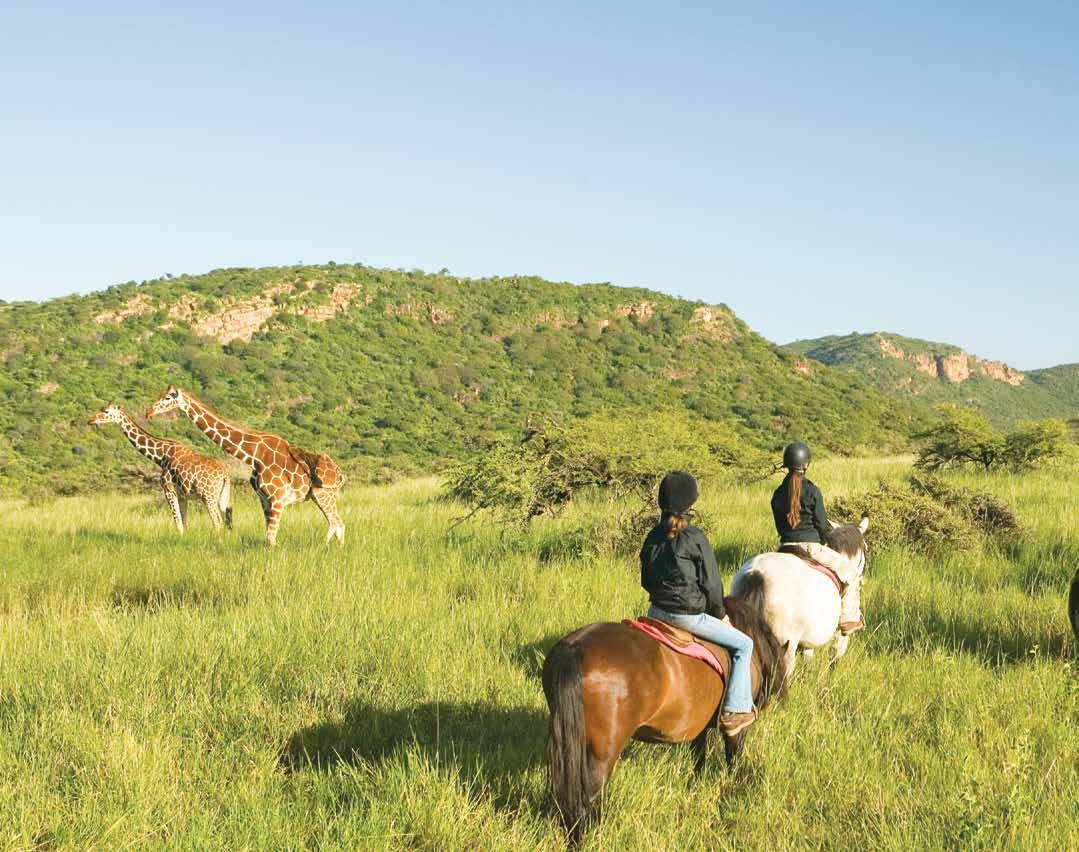
ence that takes you deep into the heart of Africa where sleeping under the stars of the African sky, and listening to the roar of lions in the distance, the singing of hyenas, and the hums of the African bush are all around you. Dinner by candlelight followed by libations over campfire provide the utmost connection between man and nature. And if the African stars will keep you from closing your eyes at night you can opt to sleep under a canvas tent to bring you to your most relaxed state while still in the heart of the African bush.
There are options to venture out on weeklong riding safaris where guides will lead you from one camp to the next, immersing you into the wild and natural African landscape. As mentioned, the horses are bombproof, so carrying a camera and dropping
“Kenya’s vibrant, colorful and fascinating culture is a joy to experience whilst on safari. Relish combining some of the most outstanding game viewing opportunities that Africa has to offer, with the fascinating traditional culture of the Maasai tribe. As a break from the saddle, visit a Maasai Boma and learn from the famous Maasai warriors.”
African Horse Safaris
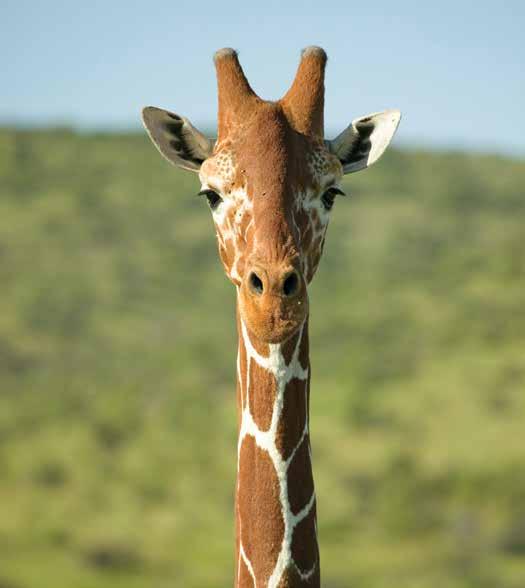

the reins to capture the beautiful African sunset is a possibility, while also having enough horse to gallop through the African Grasslands next to zebras and giraffes. Aside from riding along wild game, being able to experience African culture and native tribes is a huge benefit. African Horse Safaris guide services offer a full cultural experience. According to their website, https://africanhorsesafaris.com, their Kenya trip allows travelers to experience “Kenya’s vibrant, colorful and fascinating culture.” They offer opportunities to “relish the most outstanding game viewing opportunities that Africa has to offer, with the fascinating traditional culture of the Maasai tribe. As a break from the saddle, they offer a visit with the Maasai Boma and travelers can learn from the famous Maasai warriors. The Maasai warriors will show you the traditions of their people and how they manage living and herding cattle in a Big 5 landscape.” African Horse Safaris’ Kenya trip also helps fund black and white rhino protection programs and help act as a reason to keep fighting for their conservation. Whether an African safari is on your bucket list or you have been on a safari but plan to return to experience one horseback, this kind of destination and experience is ideal for any animal lover, especially equestrians. Plan to stay at a luxury resort that offers a one day horseback safari excursion, or seek a weeklong horseback safari camping trip that will unplug you from the rest of the world. A quick google search can help you decide what kind of experience you want to plan and the top destinations in Africa to travel, while also finding a trusted travel agent.








https://angelanorton.com


Black Prong Equestrian Village is an agritourism and sporting facility for serious competitors, horse lovers, cyclists, and outdoor enthusiasts alike. Located in central Florida, Black Prong offers a focused equine training environment and luxurious, peaceful equine accommodations conveniently located near the competition facilities of HITS Ocala and the World Equestrian Center, making it ideal for

your stay during winter training months or throughout competition season with your horses.



Black Prong is a perfect spot for the equestrian or nature lover to relax and enjoy the outdoors. The rustic one-bedroom cottages all have barns attached, so you can walk out the back door right into your barn aisle. These barns all have matted stalls and climate-controlled tack rooms. The Tiny Homes, Airstreams, and RV Pads are nearby other permanent and temporary barns, so your horses are just a short walk away. All stall rentals come with a paddock so your horse gets a chance to stretch its legs.
Black Prong is surrounded on three sides by the Goethe State Forest, with direct access to explore over 100 miles of trails. The beach entrance pool and hot tub are perfect for
relaxing by the water, or you can get your sweat on in the fitness center.

Just a short drive away from several amazing attractions, including tubing down a spring-fed river at Rainbow Springs State Park, snorkeling in an underground spring at Devil’s Den Prehistoric Springs, and zipping through the trees on Florida’s fastest and highest zipline at The Canyons Zip Line and Adventure Park offers an amazing vacation filled with endless outdoor adventures.
Guest breakfast is included in the stay, and the Bar & Grill is open Thursday through Monday 5-10 PM for dinner and drinks. The Bar & Grill features a full bar, elegant dining, weekly live music, and Marini Mondays with $6 martinis all night long.
Focus: Destinations & Vacations
views. Here are the top places to go for mountain horseback guided rides.
The Great Smoky Mountains are a top favorite and the horseback trails won’t disappoint. There are several horseback riding stables in the Smoky Mountain National Park. Guided rides can last from 45 minutes up to several hours depending on the trail you desire. Stables are located in places such as Cades Cove near Townsend, Tenn., Gatlinburg, Tenn., and Smokemont near Cherokee, NC.
If you are traveling with young children who are not quite riding age there are guided hayrides and carriage and wagon trails so the entire family can partake. If you are looking to bring your own horse to trail ride, there are about 550 miles that are open to horseback riding in the Smoky Mountain National Park. There are maps located on the National Parks Service website (nps.gov) that highlight trails open to horses and rules and regulations for all hikers.
By Lauren Abbott | Publisher labbott@mshorsereview.com
Here in the south we have an abundance of top destinations and vacation hot spots that are a car drive away. In the Mid-South we are hugged by two mountain ranges, the Ap-
palachian Mountains spanning from Georgia up to Maine, and the Ozark Mountains, spanning from Arkansa, Missouri and Oklahoma. While the white, sandy beaches of the Gulf Coast may be a favorite for mid-southerns in the summer, the mountains call to us throughout the year, and it happens that one of the best excursions to do while vacationing in a mountain town is a horseback trail ride that offers the best
The Neighboring Blue Ridge Mountains have horseback riding trails that span from Georgia up through Maine. Depending on where you are in the Blue Ridge Mountains, you will encounter similar mountain top views that the Smoky Mountain National Park has as well. Well known mountain towns like Asheville, NC have a variety of guided rides through some of their best trails. Other places throughout Chattanooga and down into North Georgia highlight the ongoing beauty of the Blue Ridge Mountains while riding through streams and on to waterfalls.
On the western side of the Mid-South are the Ozark Mountains. The Ozarks boast an abundance of horse trails especially along rivers such as the White and Buffalo Rivers.

According to the National Parks Service website (nps.gov) “Ozark National Scenic Riverways offers equestrians four designated horse trail loops totaling 25.5 miles of trail. The trails are marked with color coded blazes. The park provides two staging areas (Broadfoot and Shawnee), each with a restroom and hitching rails, where riders may park their trailers. Additional horseback riding opportunities exist west of the park within the Angeline Conservation Area managed by the Missouri Department of Conservation (MDC). MDC maintains approximately 9 miles of horse trails and a trailhead staging area north of Eminence off County Road 205. The MDC staging area provides restrooms, hitching rails, and parking for horse trailers.”

The mountain views in both Appalachian and Ozark Mountains are what draw people to horseback riding excursions. There are options to ride in valleys, along streams and rivers, or on shaded mountain trails. Riding horseback allows people to see wildlife, such as black bears, and takes them back to how people once crossed mountains prior to modern day transportation. The shade from tree covered trails also provides protection from heat and sun during hot summer months, and it is an ideal way to cover a large amount of miles to see the most one can see on a day hike. If the mountains are calling your name and you plan to travel March through November, then you will more than likely be able to find a guided Horseback Mountain Ride that can accommodate everyone in your party, even those who may not be experienced equestrians. Visit NPS.gov to find all horseback riding trails in our National Parks.

Focus: Destinations & Vacations

first of April through November 1st for daily rides (no reservation required) and offer organized rides in April, June, July, and October and holiday rides as well.
These organized rides begin on the third Monday of the month, last seven days, and include three meals per day. Riders can choose between four rides each day: a half-day slow, a half-day medium, a half-day gaited, and an all-day ride. Trail bosses accompany the group to ensure both safety and a memorable experience for the riders. The Buffalo River Trail Ride trail system canvases thousands of acres. A horse show with classes for everyone is put on during the organized rides, and a farrier is available throughout the week.
Holiday rides are on Memorial Day weekend, July 4th weekend, and Labor Day weekend. The Holiday Packages do not provide meals, but do include a campsite, electricity, covered stall, use of the bath houses, trails, and facility. Whether you choose to ride on a holiday ride or on the organized rides, you and your friends and family can enjoy a live band and barn dancing as nightly entertainment.
By Alicia Johnson alicia@mshorsereview.comNestled in rural middle Tennessee, the Buffalo River begins near Henryville in Lawrence Co. and meanders 125 miles until it meets the Duck River in Humphreys Co. The longest unimpounded (no dams here) river in middle TN, the Buffalo winds through Lawrence, Lewis, Wayne, Perry, and Humphreys counties. This small, pristine river is more like a creek in most places and offers plenty to do and see. The Buffalo River attracts hundreds of canoers, kayakers, anglers, and even equestrians each year.
Buffalo River Trail Ride, Inc. is the one and only riverside equestrian outfitter in this area. Located off Highway 13, just north of Waynesboro and south of Flatwoods, they are open from the




As far as lodging goes, Buffalo River Trail Ride offers two cabins, 100 acres of campground, or riders can bunk in their own trailers. “BYOH” (Bring Your Own Horse) applies. Stalls are available to rent, and hay and shavings are sold as well. Riders may also choose to picket their horses or bring panels. Of course, proof of negative Coggins is required. Riders must also furnish their own tack and riding equipment, as well as rain gear.
John French, local horse owner and equine enthusiast, participates in several of the Buffalo River Trail Rides each year. Staying for up to two weeks at a time, John has nothing but positive things to say about his adventures on the Buffalo River. “One of the great things about this particular location is the cooler temperatures,” he states. “Riding the Buffalo River trails down through the hollers, in the shade and through creeks, feels much cooler than the ambient temperature. In the months of June and July when it’s really too hot to ride anywhere else, this is especially beneficial,” John
explains.


There are other things to do besides just ride while on a Buffalo River Trail Ride. Canoeing, kayaking, and even floating the river on innertubes are other ways to cool off and enjoy the beautiful river after a long ride. In fact, Mr. French was taking a break from kayaking while being interviewed for this article. Cell service is spotty at best in this rural region, so you may have to be strategic in using phones or other devices. “Riding in the AM, then eating and resting, followed by staying cool in the afternoon- whether that’s kayaking, swimming, or just putting your chair in the river, is a great way to enjoy yourself here,” John states. Canoes and kayaks are available to rent through Crazy Horse Canoe Rental, just down river from the trail ride.
According to John, socializing with fellow equestrians is another high point of the Buffalo River Trail Rides. “Some of the holiday rides attract 400-500 people. These are people I may only see once or twice a year, so it’s good to visit with them and meet new people too,” he explains.
Local residents of neighboring Lewis County and avid kayakers, Larry and Yvette Eaddy, say, “There’s nothing like seeing a big group of horseback riders out on a sandbar when we float by.” Larry adds, “Being on the river in a kayak or boat is one thing, but seeing it by horseback must be breathtaking.” There are plenty of hills, “hollers,” caves, and natural springs to explore along the trails of the Buffalo River. The Eaddy’s also see native wildlife, including bald eagles, while kayaking, so equestrians have a good shot at seeing them as well. “We’re blessed to live on the river and can come enjoy it any time we want, but people who travel here for a Buffalo River Trail Ride are fascinated by the scenic river and all it has to offer,” Yvette explains.
If you think you may be interested in riding along the picturesque Buffalo River, go to brtr.com to access the Buffalo River Trail Ride, Inc.’s brochure containing dates, fees, and other important information. You can also call them at (877) 654-3164 or find them on facebook.
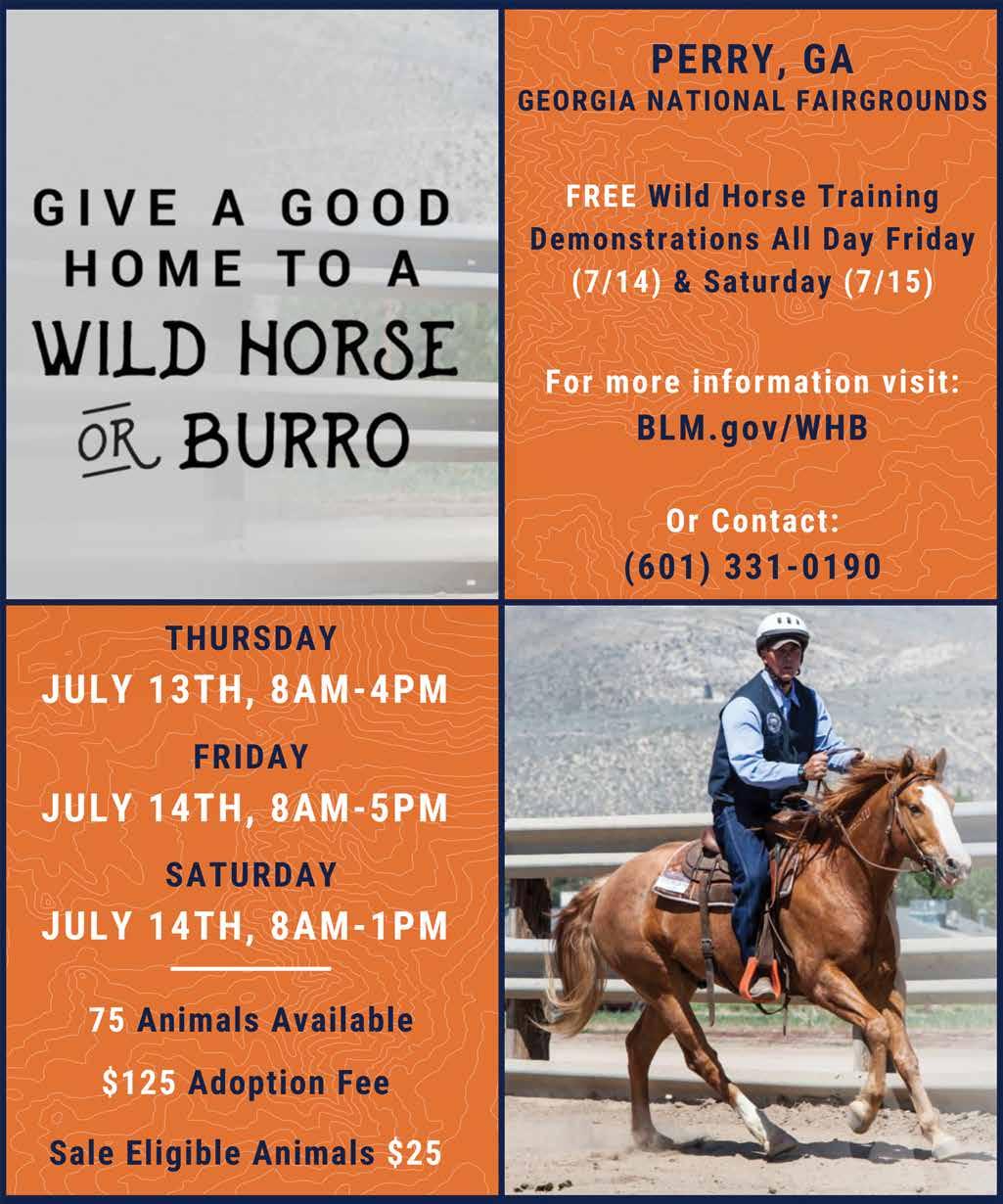
Lakeland 14 stall barn for rent. Wash rack, feed/tack room and hay storage. $1,500/month for the entire barn or $125/month per stall (3 stall minimum). Non public use only.
Nice barn apartment for rent: $700 a month. 901 338 9686.
Lakeland 3 acre pasture with 3 stall barn for rent. 2 horses maximum. $250/month. 901 338 9696
Boarding at beautiful WHITE OAK FARM: Located on 40 acres in northeast Shelby County at 10023 Rosemark Rd. Fullboard $400/month. Board includes stall cleaning/shavings and morning/evening feedings.
Numerous amenities include large stalls with windows, stall fans, heated waterers, turnout pastures, lighted outdoor arena or inside barn riding, crosstie area with hot/ cold wash rack, fly spray system, Bermuda hay grown and baled onsite. Gated facility with owners and farm manager living on property. Call Sammy 901-8333075.
Hillside Stables – Bill and PK Theobald have been professionally caring for horses for 23+ years. Spend time with your horse while full board covers all the daily chores. Horses fed 2x daily, stalls cleaned daily, same sex turn out. $450 per month. Happy, healthy horses – friendly, knowledgeable people. Covered arena, round pen, lighted outdoor riding area and wooded trails! Check us out on Facebook, website www.HillsideStables.wordpress.com or call 901/857-7500.
Nice friendly barn located in Cordova/ Memphis, TN. Located 15 minutes from Germantown, Bartlett, East Memphis and Shelby Farms.
Owners are on site. Retired or Aged horse’s welcome!

High dry barn, trails, and small arena. Call Rob (901) 359-3341
Premier Horse Boarding in Fayette county. Full/pasture board. Retired horses are welcome. Private pastures, grained 2x daily w/senior feed & Bermuda hay. All weather outdoor arena w/lights. 50+acres of riding, lots of additional amenities. Look us up on FB. Blues City Warmbloods Dana 901331-3500
Square Bales: $6.50


4x5 Round Bales: $65

Organic mixed grass/legume
No chemicals; barn stored
Arlington, TN
Tom Brannon (901) 573-9074
Three Silos Training: Developing your horse for its specific job; helping set up a successful partnership between horse and rider. Expertise in lead change, collection, suppleness, balance, & lightness to aids.
Collierville, Tn. $1,200/month, includes full care & turnout. Suzy Hoyt 901-4971131.
White Oak Farm: Full Time job opening for hard working individuals with experience around horses. Job duties include cleaning stalls, feeding horses, bedding stalls, cutting grass, weed eating, operating farm equipment, stacking hay and everything involved with caring for 25 + horses and 40 acres. You will be responsible for feeding horses on alternate Sundays. Call 901-833-3075 or 901-458-4314 for details. whiteoakf@aol.com 10023 Rosemark Rd. Atoka, TN
Training your horse, the correct & gentle way. Desensitizing & teaching respect on the ground; trust without fear. We mostly use the Buck Brannaman training methods. Exc. References. Grained 2 x day w/ Bermuda hay & private pastures. $800 Mo. Michael Garner 901-857-8060 Blues City Warmbloods on FB
Horse-drawn carriage drivers needed in Downtown Memphis. We will train. No experience necessary. (901) 4962128. uptowncarriages.com
SADDLE & TACK REPAIR:
Van’s Leather Craft. Custom gun holsters, belts, knife sheaths, photo albums etc. For sale: Used & new saddles and horse health products.
Off Hwy. 309, 1909 Bubba Taylor Rd., Byhalia, MS. (662) 838-6269.
BOLIVAR , TN 38008 14840 HWY 18 SOUTH 731-658-3931



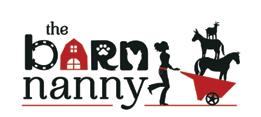

HOURS: M-F: 7:00AM - 4PM





MARK A. AKIN , DVM Practice limited to Lameness and Performance Issues associated with the Equine Athlete




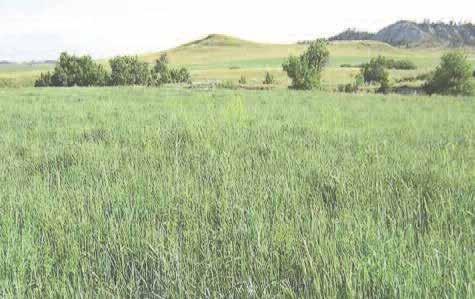


By appointment only : 601-813-1128 cell 901-854-6773 (85-HORSE) MAkindvm86@gmail.com

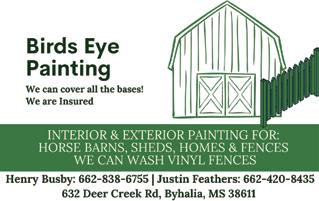

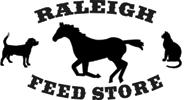
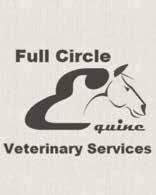
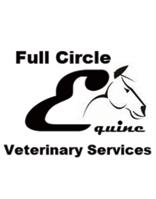
Starkville, MS (662)325-0508; (662)3259350
https://mshorsepark.com/events
July 20-23: Lucky Dog Barrel Race
Roane State Community College, Harriman, TN
http://www.roanestate. edu/?6497-Events-Calendar
June 30- July 2: East TN. Cutting Horse
July 7-8: American Gaited Mule Show
July 15-16: Centerline
July 20-23: North American Saddle Mule Donkey Association
July 28-30: TN Stock Horse
Murfreesboro, TN www.mtsu.edu/tmc
July 6-9: KQHA Hygain Double Down Circuit
July 12-16: Southland Circuit Horse Show
July 20-29: Walking Horse Owners Association 45th Annual International Pleasure and Colt Grand Championship
Cleveland, TN 423-476-9310 www.tristateexhibitioncenter.org
June 28-July 1: Cleveland Charity Horse Show
July 7-8: JX2
July 14-15: NRHA
July 22-23: Scenic Flight Dressage Show III
July 29: Smokey Mountain Show Series
https://www.ponyclub.org/Calendars/ Events.aspx
https://midsouth.ponyclub.org/calendar/ https://deepsouth.ponyclub.org/ https://middletennessee.ponyclub.org/calendar/
July 1-2: HB Certification
July 22-24: Upper Level Riding Certification
Church: Sundays at 4:30 pm at Houston Levee Community Center, 1801 N. Houston Levee Rd. in Cordova, followed by Open Arena at Circle C Arena next door behind Calvary Church. Visit HoustonLeveeCowboyChurch.com or call 901-3553204 for more information.
FIRST SATURDAY: Houston, MS. Triple E Livestock. Tack 10 am. Horses 2 pm. Info: A.J. Ellis 662-401-9760; 662-2662808
FOURTH SATURDAY: Holly Springs, MS. Marshall County Fairgrounds. Marshall Co. Livestock Exchange. 662-3179021
FIRST, THIRD, FIFTH FRIDAY: Woodbury Livestock Market, 2403 McMinnville Hwy. Tack 5:30 p.m.; Horses 8 pm. Info: (423) 447-8119
FIRST SATURDAY: Hattiesburg, MS. T. Smith Livestock Sales. Tack 10:30 am. Horses 1:30 pm. Info: 601-583-0828
SECOND SATURDAY: Gleason, TN. West TN Auction Barn. 330 Fence Rd. Tack 5:30 pm. Horses 8 pm. Info: Chucky Greenway 731-571-8198
SECOND & FOURTH SATURDAY: Carthage, MS. Farmers Livestock Marketing. Tack 1 pm. Horses 5 pm. Info: 601-2677884; 662-317-9021
CLASSES AND CLINICS
July 1-2: Jeremy Steinberg Clinic, kentuckydressageassociation.com
http://www.nbha.com; https://ibra.us/ shows/US-TN-WEST
July 1: Buck Creek Sportsman Club @ 7PM, Smiths Grove, KY
July 4: Larue County Saddle Club @ 2PM, Hodgenville, KY
July 7-9: Central KY Ag Center, Liberty, KY
July 8: Circle K Arena and Stables, Summertown, TN
July 8: Muhlenberg Co. Ag Center, Powderly, KY
July 14: Kenton Co. Fairgrounds @ 7PM, Independence, KY
July 14: Milan Saddle Club, Milan, TN
July 8-9: Central MS CHA; Senior World Tour, Jackson, MS
July 15-16: CMCHA Senior World Tour, Lebanon, TN
DRESSAGE
www.mid south dressage academy.org, www.TNDressage.com, www.tvdcta.org, kentuckydressageassociation.com, https:// sites.google.com/view/greystonedressage/ home, https://www.flightlinedressageshows.com
July 1-2: Jeremy Steinberg Clinic, kentuckydressageassociation.com
July 15: Schooling Show, Hunter’s Edge Stables, Memphis, TN
July 22-23: Scenic Flight Dressage Show
III, Tri-State Exhibition Center, Cleveland, TN
July 22-23: KDA Summer Classic I & II, Rolex Arena, Lexington, KY
July 29-30: Memphis Eventing Combined Training Show
July 30: KDA Breeder’s Classic, Spy Coast Farms, Lexington, KY
DRIVING
www.nashoba carriage.org, www.americandrivingsociety.org, www. caaonline.com
July 15: Keeneland Concours d’Elegance, Lexington, KY
EVENTING
http://useventing.com; www.river-glen.com
July 7: Memphis Eventing Panther Creek Combined Training Schooling Show, Nesbit, MS
https://nwha.com, www.sshbea.org, www. walkinghorseowners.com, www.shobaonline.com
July 7-8: American Gaited Mule Show, Harriman, TN
July 8: PWHAT Horse Show, Lebanon, TN
July 14-15: NMHA United We Stand, Prestonsburg, KY
July15: BPWHA Horse Show, Shelbyville, KY
July 20: TWHBEA World Versatility Championship, Murfreesboro, TN
www.pfha.org, www.tvpfha.com
June 30- July 2: Bluegrass Triple Crown
July 28-29: Summer Spectacular, Statesboro, GA
www.franklinpolo.com
July 22: Angel Heart Farm Charity Match; TN v. KY
www.tqha.org, www.mqha.org, www.
wtqha.org, www.midsouthquarterhorse. com, facebook Mid-South Breeders
July 6-9: KQHA Hygain Double Down Circuit, Murfreesboro, TN
July 13-16: Southland Circuit Horse Show, Murfreesboro, TN
www.americanranchhorse.net, www.volrha. com
June 28- July 8: World Championship Show, Ocala, FL
July 14-15: NRHA, Cleveland, TN
www.ipra-rodeo.com, www.prorodeo.com, www.lonestarrodeocompany.com
June 30-July1: Henderson, KY
July 7-8: [A] IPRA, Hohenwald, TN
July 7-8: LSR/IPRA, Dickson, TN
July 13-14: Sharp Co. Fair and Rodeo, Ash Flat, AR
July 14-15: [A] IPRA/SPRA, Columbia, TN
July 14-15: [A] IPRA/PCA, Savannah, TN
July 15: [A] IPRA*, Leitchfield, KY
July 15: DSRA/IPRA, New Albany, MS
July 18: [A] IPRA*, Somerset, KY
July 21: NCA/IPRA*, New Market, TN
July 21-22: LSR/IPRA, Owenton, KY
July 21-22: [B] IPRA/PCA, Whitwell, TN
July 21-22: Neshoba Co. Fair and Rodeo, Philadelphia, MS
July 22: [A] IPRA, Pell City, AL
July 22: DSRA/IPRA, Holly Springs, MS
July 28-29: [A] IPRA/NCPRA*, Jackson, MS
July 28-29: [B] IPRA/NCPRA, Sweetwater, TN
July 28-29: NCPRA/IPRA, Butler, AL
http://extension.msstate.edu/4-h https://ag.tennessee.edu/AnimalScience/ UTHorse/Pages/Shows.aspx#AnchorTop
July 26: Rock the Runway contest, Jackson, TN
Sarah, MS. 548 Bryant Lane. Bryant Lane Cowboy Church. Info: facebook Wynne, AR. CR 381. Three Trees Cowboy Church. Info: threetreescowboychurch. com; facebook
Collierville, TN. 1656 N. Col-Arl. Rd. Old West Special Trails. Sunday 10:30 am. Cordova, TN: Houston Levee Cowboy
July 14-15: The Oak Grove Equestrian Center, Oak Grove, KY
July 15: Greenup Co. Fairgrounds @ 4PM, Greenup, KY
July15: Grayson Co. Saddle Club @ 6PM, Leitchfield, KY
July 15: Fredonia Valley Riding Club @ 6PM, Fredonia, KY
July 20-23: Lucky Dog Barrel Race, Starkville, MS
www.nchacutting.com
July 1-2: Senior World Tour, Jackson, MS
July 1-2: Senior World Tour ETCHA, Harriman, TN
July 20-29: WHOA 45th Annual International Pleasure and Colt Grand Championship, Murfreesboro, TN
July 22: SSHBEA Ladies Auxiliary Show, Shelbyville, TN
http://wthja.com, www.brownlandfarm. com, www.mthja.com, www.ethja.org www.gulfcoastclassiccompany.com
June 28- July 2: Brownland Farm Summer, Franklin, TN
July 5-9: Mid-South Classic, Franklin, TN
July 8-9: Walnut Grove, Talbot, TN
July 29-30: Icon Equestrian Center, Friendsville, TN
July 28-29: [A] IPRA/ACRA, Huntsville, AR
July 28-29: [A] IPRA, Springfield, TN www.ustrc.com, www.jx2events.com
July 8-9: USTRC/WSTR, Cleveland, TN
July 21-23: USTRC Alabama Championships, Montgomery, AL
www.americanstockhorse.org
July 28-30: TN Stock Horse, Harriman, TN



